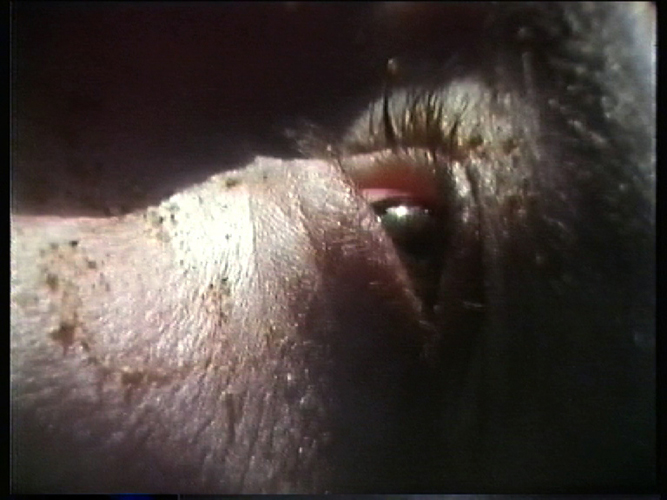
This 16mm film project draws inspiration from Daniel Dafoe’s Robinson Crusoe. Crusoe’s time on a desert island has prompted much reflection on the way in which the wilderness is tamed through the castaway’s ingenuity and his imposition of imported cultural practices. Unsurprisingly, Crusoe’s determination to make the wilderness more like home has been discussed extensively in relation to colonialism, with post-colonial readings unpicking the connections between Crusoe’s ideas of civilization and the justifications that were made in defence of colonial rule. Key to this discussion is Crusoe’s relationship with Friday, whom he teaches ‘civilizing’ ways and transforms into a dutiful slave. In the novel, the learning of language features as one aspect of Friday’s education but language can be viewed as the fundamental link with civilizing order if one perceived it as the antithesis of corporeality. In Home Comforts it is Crusoe who slowly absorbs the structure and lexicon of language. At the film’s beginning, Crusoe’s mind is ‘as clear as a freshly-wiped slate’, but as his memory returns it becomes the key to recognizing the extent of his predicament. Among his concerns is a sense of not being alone, of being in a territory where an Other is present - not so much as a threat of physical harm but as an ego ideal that begins to undermine his sense of his own achievements. The female voiceover, that against all odds asserts his ingenuity and prowess, raises the possibility that this virtual image of self is one that requires an external gaze to narrativize achievement and witness a mastery of space. Home Comforts was made in collaboration with performance artist Ian Sherman and was completed in 1993.
| 3G Hinterland: Denge Wood | 3G Live Broadcast | And Then There Were None | Climbing Frames | Landscape with Ruin | Treasures | Bosson Heads | Home Comforts | Pattern and Symmetry |
